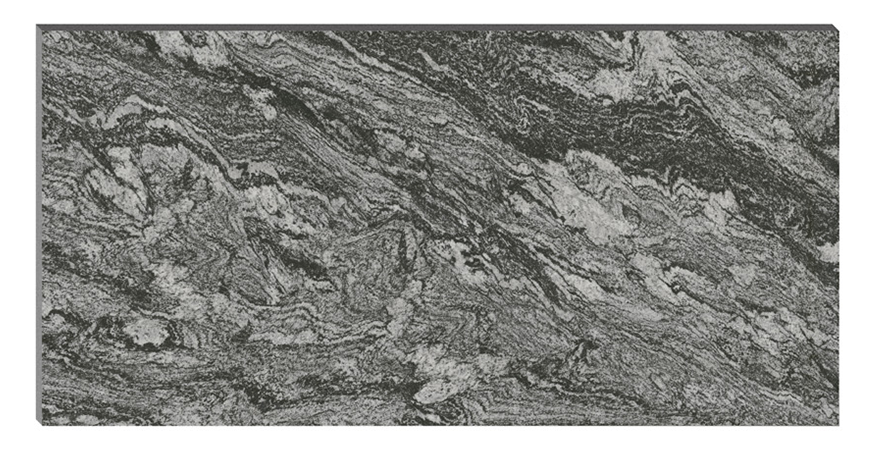|
Wall cladding tiles have become an integral part of modern construction and interior design, offering a wide array of benefits for both the interior and exterior of buildings. These tiles not only enhance the aesthetic appeal but also contribute to functionality, durability, and even energy - efficiency.

I. Aesthetic Diversity for Interior and Exterior
A. Interior Aesthetics
Inside a building, wall cladding tiles provide endless creative possibilities. In living rooms, large - format porcelain tiles with a marble - like finish can create a luxurious and sophisticated atmosphere. They can be installed in a seamless pattern to give the illusion of a continuous, high - end surface. For kitchens and bathrooms, colorful ceramic tiles can be used to add a pop of color or create a themed environment. Mosaic tiles, with their small, intricate pieces, are perfect for backsplashes, adding a touch of artistry and texture. Whether it's a modern minimalist look or a more traditional, ornate style, interior wall cladding tiles can be customized to fit any design concept.
B. Exterior Aesthetics
On the exterior, wall cladding tiles play a crucial role in defining a building's character. For a contemporary office building, smooth, metallic - looking tiles can convey a sense of professionalism and innovation. In residential areas, natural - stone - look tiles, such as those mimicking sandstone or slate, can blend the house harmoniously with the surrounding environment. The color palette for exterior tiles is also vast, from light, earthy tones that create a warm and inviting facade to bold, bright colors that make a building stand out in the urban landscape.
II. Durability and Performance
A. Interior Durability
Interior wall cladding tiles are designed to withstand the wear and tear of daily life. Porcelain tiles, in particular, are highly resistant to scratches, stains, and moisture. In high - traffic areas like hallways and commercial lobbies, their durability ensures that they maintain their appearance over time. Ceramic tiles, while not as tough as porcelain in some aspects, still offer good resistance to general household activities and are easy to clean. This makes them a practical choice for areas where spills and splashes are common, such as kitchens and bathrooms.
B. Exterior Durability
Exterior wall cladding tiles face much harsher conditions, including rain, wind, sunlight, and temperature fluctuations. Tiles made from materials like fired clay, porcelain, and certain types of natural stone are up to the challenge. Fired clay tiles have been used for centuries due to their ability to resist weathering. Porcelain tiles, with their low water absorption rate, are highly resistant to freeze - thaw cycles, which can cause other building materials to crack. Natural stone tiles, although more porous in some cases, can be treated to enhance their weather resistance and durability, making them suitable for long - term exterior use.
III. Maintenance and Long - Term Cost - Effectiveness
A. Interior Maintenance
Maintaining interior wall cladding tiles is relatively straightforward. Most stains can be removed with a simple wipe using a damp cloth and a mild cleaner. In the case of grout, regular cleaning and occasional resealing can keep it looking fresh and prevent the growth of mold and mildew. The long - lasting nature of these tiles means that there is no need for frequent replacements, reducing the overall cost of interior upkeep over time.
B. Exterior Maintenance
Exterior wall cladding tiles also require minimal maintenance. Their smooth surfaces do not accumulate dirt easily, and a periodic wash with water can keep them looking clean. Unlike some painted surfaces that need to be repainted every few years, tiles maintain their color and finish without significant fading. This not only saves on the cost of repainting but also on the labor and time associated with exterior building maintenance.
IV. Energy - Efficiency Considerations
A. Interior Energy - Efficiency
Some interior wall cladding tiles can contribute to energy - efficiency. Tiles with insulating properties can help regulate the temperature inside a room. For example, certain types of foam - backed tiles can act as a barrier, reducing heat transfer between the interior and exterior of the building. This can lead to lower heating and cooling costs, especially in areas with extreme climates.
B. Exterior Energy - Efficiency
Exterior wall cladding tiles can also play a role in energy - conservation. Light - colored tiles reflect sunlight, reducing the amount of heat absorbed by the building. This helps to keep the interior cooler during hot summer months, reducing the need for air - conditioning. Additionally, tiles with proper insulation characteristics can improve the overall thermal performance of the building envelope, contributing to energy savings throughout the year.
In conclusion, wall cladding tiles are a versatile and practical choice for both the interior and exterior of buildings. Their aesthetic flexibility, durability, low - maintenance requirements, and potential energy - saving benefits make them an attractive option for architects, builders, and homeowners. As the construction and design industries continue to evolve, wall cladding tiles will undoubtedly remain a popular choice for creating beautiful, functional, and sustainable buildings.
|